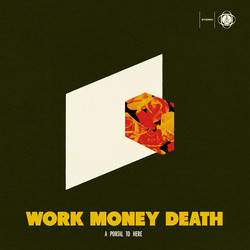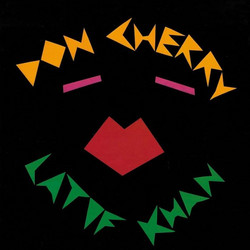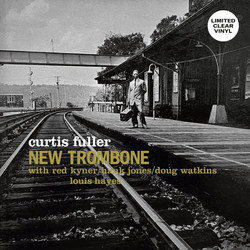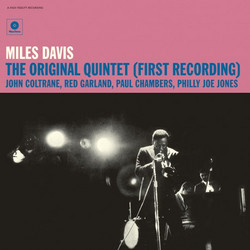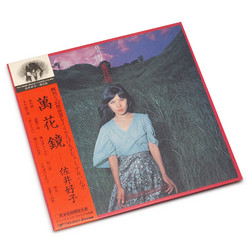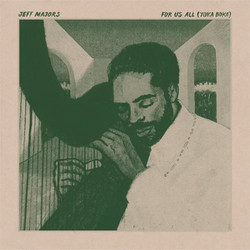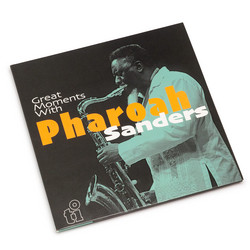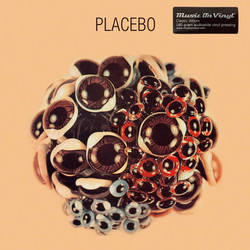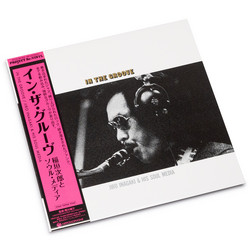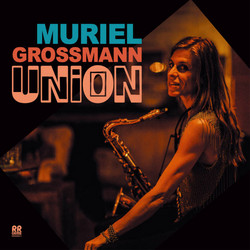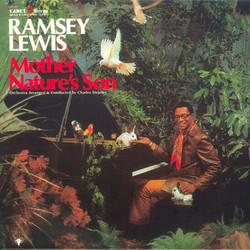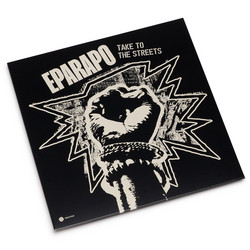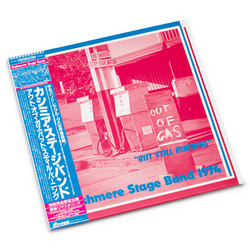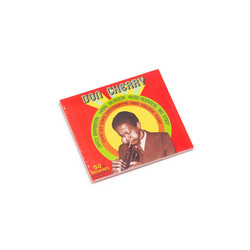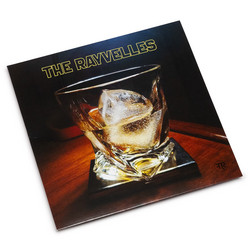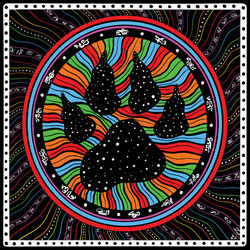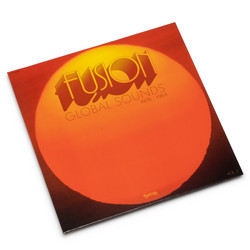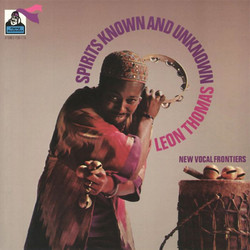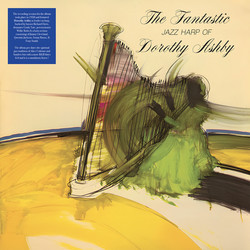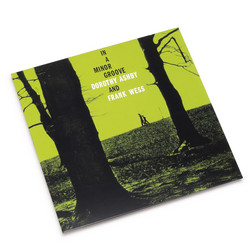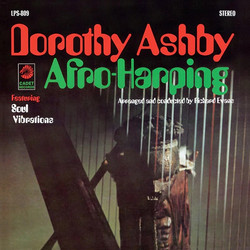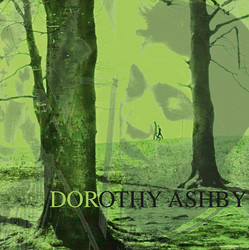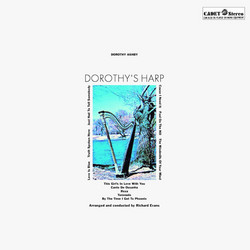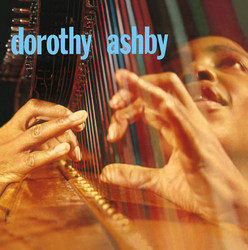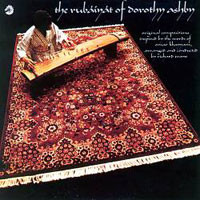Dorothy Ashby
With Strings Attached (1957-1965) 6LP Box
6LP box set containing original studio albums from 1957 - 1965. Remastered directly and lacquers cut from the original analog tapes, 180gm vinyl and housed in reverse-board deluxe sleeves. Extensive book with foreword from Brandee Younger, comprehensive liner notes by Shannon J. Effinger and previously unseen photographs and ephemera. Housed inside book-shelf style slipcase with silver-foil detail. New Land are proud to present the first multi-disc box set from one of the most overlooked artists in Jazz history: Dorothy Ashby. The 6 LPs contained within this lavish box-set will give long overdue retrospection to her early works from 1957 to 1965, a period that found her represented by some of Jazz music's most important record labels; Regent, Prestige, Jazzland, Argo and Atlantic. "Imagine if Sidney Bechet, Charlie Christian and Jimmy Smith were barely remembered and recordings of their music were long unavailable and known only on the geekiest corners of Discogs. That is essentially the status of harpist Dorothy Ashby. Like the three figures cited above, Ashby essentially created a language for her chosen instrument, the harp, where virtually none has existed before and established it as a legitimate and expressive vehicle for jazz improvisation at the highest level. Just how brilliantly and effectively she did this is documented on With Strings Attached, 1957—1965 (New Land, 2023). This lavish, limited-edition six-disk box set is pressed on 180-gram vinyl and comes with a 44-page booklet containing extensive notes and a biographical essay and appreciation by Shannon J. Effinger.
Notwithstanding the relative obscurity of these recordings, they are not vault discoveries. This material has been hiding in plain sight with much of it recently issued by European labels of varying degrees of legitimacy. Still, the New Land box is the most comprehensive collection of Ashby's recordings to date. It collects 53 tracks from six sessions: The Jazz Harpist (Regent, 1958), Hip Harp (Prestige, 1958), In A Minor Groove (Prestige, 1958), Soft Winds: The Swinging Harp of Dorothy Ashby (Jazzland, 1961), Dorothy Ashby (Argo, 1962) and The Fantastic Harp of Dorothy Ashby (Atlantic, 1965).
Dorothy Ashby (b.1930) was among the remarkable cohort of jazz musicians born in the first half of the '30s that emerged from Detroit's Cass Technical High School, including Kenny Burrell, Donald Byrd, Curtis Fuller, Della Reese and Doug Watkins. Her first instrument was the piano, but she began playing the harp at Cass Tech, which is home to the oldest public school harp program in the U.S. Despite the novelty of an improvising harpist—or perhaps because of it—club owners in the '50s were hesitant to book Ashby as a leader. Sexism further limited her opportunities, but Ashby took whatever gigs she could—weddings, parties and dances. On a swing through Detroit with the Count Basie band, Frank Wess, a pioneer of the jazz flute, heard Ashby and invited her to New York to record.
The first three records, nearly half the tracks in the New Land box, feature the congenial pairing of Ashby and Wess. Flute and harp go together like peanut butter and jelly, a fact known since Mozart's day, and the 22 tracks on which they are paired make for charming and delightful music. The light-footed grace with which Ashby and Wess swing make it easy to dismiss their collaboration as solid, workmanlike product from the busy '50s Prestige factory. But that sells Ashby's achievements short.
For starters, the 47-string concert harp is singularly unsuited to navigating the complex and changing harmonies of the standards that dominate the setlists, especially at brisk tempos. To change keys, Ashby had to execute balletic footwork on a series of seven pedals. If Wess is Fred Astaire, then Ashby is Ginger Rodgers, doing everything Wess is doing only backward and in heels.
Yet she shows a dazzling variety of skills and approaches. Spinning complex single-line right-hand runs with left-hand punctuations on the offbeats, Ashby brings to the harp the classic bebop piano language of her fellow Detroiter and exact contemporary Barry Harris. She can sound like a guitarist, especially on the blues that pepper these sessions, but mostly she sounds like nobody else, probably because there was nobody else with Ashby's combination of technical skill and imagination.
Wess is mostly excellent, though at times, he can sound less than engaged with the material, especially on In A Minor Groove. On the Ashby/Wess records, Ed Thigpen, Art Taylor and Roy Haynes represent luxury casting in the drum chair, but they are given little to do beyond keeping time with brushes, staying out of the way of the relatively soft-spoken front-line instruments. Bassists Wendell Marshall, Eddie Jones and the forgotten Herman Wright walk four impressively, but all the action is on the top line and Ashby always delivers.
The fourth record in the box set, Soft Winds, is a high point. Solid swinger Wright returns on bass, and Jimmy Cobb, nearing the end of his tenure with Miles Davis swings like crazy. Thanks perhaps to better studio isolation (the first three sessions were recorded in the living room of Rudy Van Gelder's parents' home) or advances in recording techniques (the date is from 1961) sticks, replacing the brushes, make a welcome debut.
Yet the star of the 1961 session is pianist and vibraphonist Terry Pollard, a fellow Detroiter one year younger than Ashby and even more neglected by history. The two strike sparks from the beginning of the title cut, with Ashby strumming four like Charlie Christian behind Pollard's bubbling lines, played with the verve of Lionel Hampton. Ashby sounds exceptionally engaged on this session. Her octaves on "I've Never Been In Love Before" recall Wes Montgomery while "With Strings Attached" demonstrate how Ashby and Pollard were aware of the modal advances of Davis and John Coltrane. Together, they even manage to spin the dross of Dimitri Tiomkin's theme from "The Guns of Navarone" into pure gold.
The final two records do not quite reach the level of Soft Winds though Ashby is always solid. Dorothy Ashby recorded in Chicago one week before Soft Winds, finds her in a trio with Wright and her husband, who uses his stage name, John Tooley. "Secret Love" swings out confidently and her original "John R." is a boogaloo blues—two years before Mongo Santamaria's cover of "Watermelon Man."
The final session, The Fantastic Harp of Dorothy Ashby, brings us to 1965. Recorded for Atlantic by Tom Dowd and produced by Arif Mardin the date finds Ashby in the company of first-call New York studio cats Richard Davis on bass, drummer Grady Tate and Willie Bobo on percussion. A quartet of trombones adds color and rhythmic punch to six of the 10 cuts. It is swanky in a mid-'60 sort of way, but Ashby still shines, channeling Montgomery on "House Of The Rising Sun," and somehow sailing through the chromatic labyrinth of "Invitation," a tune that should be impossible to play on the harp, as though it were "Chopsticks."
Three more leader dates for Chicago's Cadet label would follow, and a couple of solo harp recordings in the 80s. Those are not included in this set, but with the possible exception of Afro-Harping (Cadet, 1968), Ashby's best work as a leader is all here, ready for rediscovery.
Dorothy Ashby didn't spawn a school of followers—unless you count Alice Coltrane, another Cass Tech graduate who played piano and harp albeit in a very different style, That is hardly Ashby's fault. Unlike Bechet's soprano saxophone, Christian's guitar or Smith's organ, a harp was not something you were likely to find in the local band room, music store or church. For an instrument, this difficult to learn, expensive to own and challenging to transport, marginality is all but assured.
Yet as this illuminating box amply demonstrates, and thanks to the revival of interest in Coltrane's so-called spiritual jazz and the advocacy of youthful players such as Brandee Younger, the harp is once again knocking on the door of the broader jazz consciousness, retracing the bold steps made by Dorothy Ashby 70 years ago. " All About Jazz
6-LP box set containing original studio albums from 1957 - 1965. Remastered directly and lacquers cut from the original analog tapes [except for Jazz Harpist for which the tapes are lost] by Kevin Gray Manufactured at Pallas on 180gm vinyl and housed in reverse-board deluxe sleeves. Extensive book with foreword from Brandee Younger, comprehensive liner notes by Shannon J. Effinger and previously unseen photographs and ephemera. Housed inside book-shelf style slipcase with silver-foil detail. Limited edition one-time pressing of 1000 copies worldwide.
